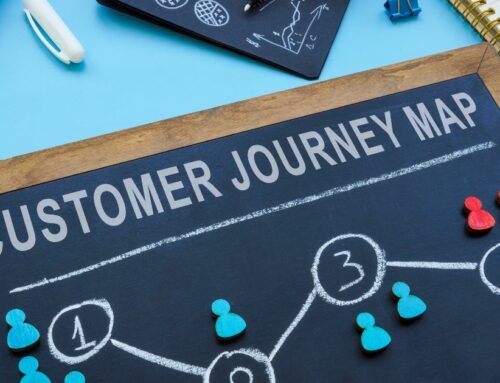Read time: 5 mins
At the heart of every memorable customer experience lies the ability to connect with individuals on a personal level. Imagine walking into your favourite coffee shop and having the barista remember your usual order, asking if you’d like to try the new seasonal blend. This isn’t just about coffee; it’s about feeling valued as a customer. For marketers and brand managers, this level of personalization is the holy grail—a way to not only engage customers but to build lasting relationships that drive loyalty and, ultimately, sales.
The Rise of Personalization in Marketing
The evolution of marketing has taken a sharp turn towards personalization. With consumers bombarded by generic ads daily, standing out requires more than just creativity—it demands relevance. A study by Epsilon revealed 80% of consumers are more likely to purchase from a brand that offers personalized experiences. This shift is not just a trend; it’s a necessity for brands wanting to stay competitive. The days of one-size-fits-all marketing are over. Brands must now cater to individual preferences, needs, and behaviours, or risk being ignored.
Understanding Consumer Data: The Backbone of Personalization
To create a tailored experience, you need to understand who your customers are. This is where consumer data comes into play. From browsing habits to purchase history, the data collected from various touchpoints is crucial. Leveraging this information allows brands to segment their audience, creating unique marketing messages that resonate with different groups. It’s no longer about reaching as many people as possible; it’s about reaching the right people with the right message at the right time.
Crafting Tailored Content: Speak Directly to Your Audience
Content is king, but personalized content is royalty. By tailoring your content to match the interests and needs of your audience, you’re more likely to capture their attention. Whether it’s through email marketing, social media, or targeted ads, the goal is to create a connection that feels personal. For example, dynamic content in emails that changes based on the recipient’s previous interactions with your brand can significantly increase engagement. It’s about making every customer feel like the message was made just for them.
The Role of Technology in Personalized Marketing
Technology is the enabler of personalized marketing. Tools like AI and machine learning have made it easier than ever to analyze consumer behaviour and predict future actions. This allows brands to automate and optimize their marketing strategies, ensuring that every touchpoint is personalized. AI-driven chatbots, personalized product recommendations, and predictive analytics are just a few examples of how technology is revolutionizing the way brands interact with customers. It’s a game-changer for marketers looking to scale their personalization efforts without compromising quality.
Implementing Personalization Across Channels
Consistency is key when it comes to personalization. Your customers should have a seamless experience, whether they’re interacting with your brand online, in-store, or via mobile. Implementing personalization across all channels ensures that your message is coherent and effective. For instance, a customer who browses your website for a specific product should see related ads on social media and receive personalized emails. This omnichannel approach not only reinforces your brand message but also makes the customer journey smoother and more enjoyable.
Measuring the Success of Personalized Marketing Strategies
As with any marketing strategy, it’s essential to measure the effectiveness of your personalized campaigns. Key performance indicators (KPIs) like conversion rates, customer engagement, and return on investment (ROI) should be tracked to gauge success. A/B testing is a valuable tool in this process, allowing you to compare different approaches and optimize your strategy over time. Remember, personalization is not a one-time effort but an ongoing process that requires constant refinement based on data and feedback.
Overcoming Challenges in Personalized Marketing
While the benefits of personalized marketing are clear, it’s not without its challenges. Data privacy concerns, the complexity of data management, and the risk of over-personalization are just a few hurdles that brands must navigate. Striking the right balance between personalization and privacy is crucial. Consumers appreciate personalized experiences, but not at the expense of their privacy. Transparency in how data is collected and used is essential to building trust with your audience.
Conclusion
Personalized marketing is not just a strategy; it’s an art that requires a deep understanding of your audience, the right tools, and a commitment to delivering value at every touchpoint. Whether you’re a marketer or a brand manager, the potential to create meaningful connections with your customers through personalization is limitless. But with this potential comes the responsibility to respect privacy and deliver on promises. So, how will you tailor your marketing strategy to meet the unique needs of your customers?
FAQs
Begin by identifying the key data points that will help you understand your customers better, such as purchase history, browsing behaviour, and demographic information. Use customer relationship management (CRM) systems or data management platforms (DMPs) to collect, store, and analyze this data. Ensure you have the necessary permissions and comply with privacy regulations.
There are several tools available depending on your needs. AI-powered platforms like HubSpot and Salesforce offer comprehensive solutions for personalized marketing. For email marketing, tools like Mailchimp or Klaviyo allow for dynamic content customization. Additionally, using analytics tools like Google Analytics can help track customer behaviour and optimize your personalization efforts.
Transparency is key. Make sure your customers know how their data is being used and give them control over their information. Implement strong data security measures and follow regulations like GDPR or CCPA. It’s also important to avoid over-personalization, as it can feel intrusive to customers. Instead, focus on delivering value through relevant and helpful content.





